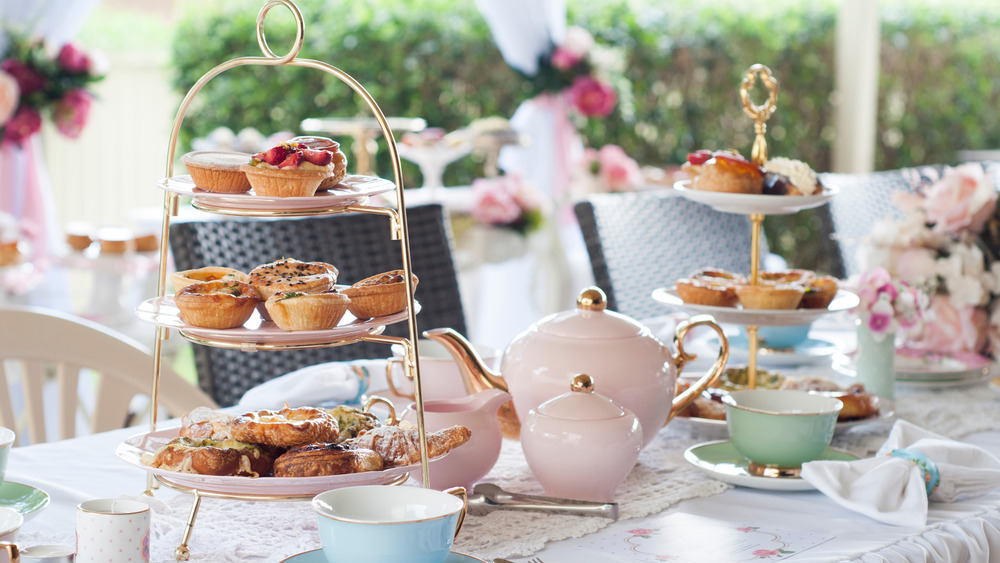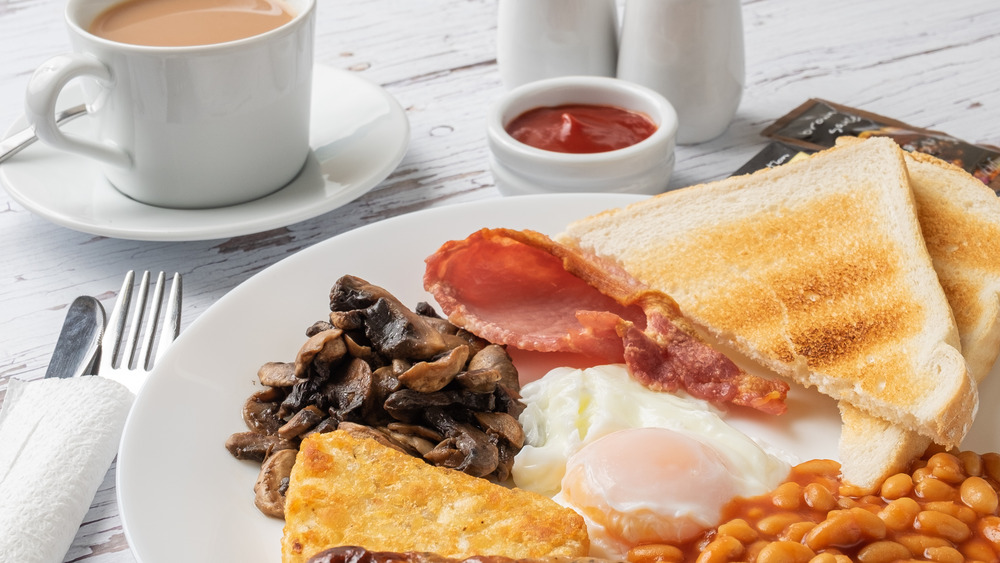High Tea Doesn't Mean What You Think It Does
Picture yourself sitting in the palace garden (Buckingham, Windsor Castle, Sandringham, take your pick), delicately sipping Darjeeling from a Sèvres porcelain cup and nibbling on a watercress and salmon finger sandwich. Now blink your eyes, and poof! All of a sudden, you're magically transported into the palace kitchen where you join the belowstairs staff in a British meal consisting of beans on toast, rashers of bacon, and chips washed down with mugs of strong black tea with plenty of milk. Okay, which of these meals would you think was called "high tea?" If you guessed the garden soiree, bzzzzt! Wrong! Try again.
We Yanks often think that the "high" in "high tea" must mean something extra fancy or "high class," as in this article from House Beautiful telling you where you can "have high tea like the royals." Actually, all of those elegant little afternoon snacks they describe more rightly fall under the heading of "afternoon tea." As AfternoonTea.co.uk explains, this was meant to be a mini-meal designed to sustain the upper class through the arduous ordeal of dressing for a more formal, multi-course dinner to be served several hours later, high tea, on the other hand, refers to a heartier spread that serves as the evening meal itself.
How did high tea get its name?
High tea, contrary to American expectations, has traditionally been a meal embraced by the British working classes, per AfternoonTea.co.uk. Working people, after all, don't have time to come home and fool around with fancy little nibbles while their servants prepare a multi-course dinner. Once the working day is done, 18th-century factory workers and modern-day corporate ladder climbers alike have time for just one meal before collapsing into bed, so whether that meal goes by the name of high tea, supper, or dinner, it amounts to the same thing.
So how did the evening meal come to be called high tea, then? Tea Time suggests that it might have to do with the height of the tables and chairs. Afternoon tea would be taken at low tables such as coffee tables, since it's easy enough to balance a small scone and a cup of tea while sitting in a comfy chair. High tea, on the other hand, was a proper knife-and-fork meal served at a dining table surrounded by higher chairs.
Even if you find semantics, a snooze, it would behoove you to remember the difference between the two teatimes should you ever travel to the U.K. and wish to partake in one or both meals. As historian and tea specialist Bruce Richardson tells NPR, "The Ritz-Carlton staff in London always can tell it's an American when they call for high tea at 2 in the afternoon."

